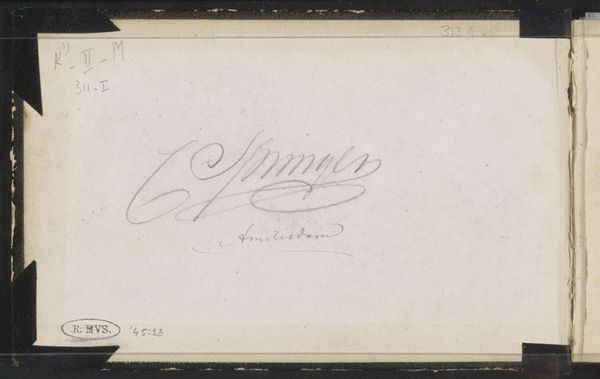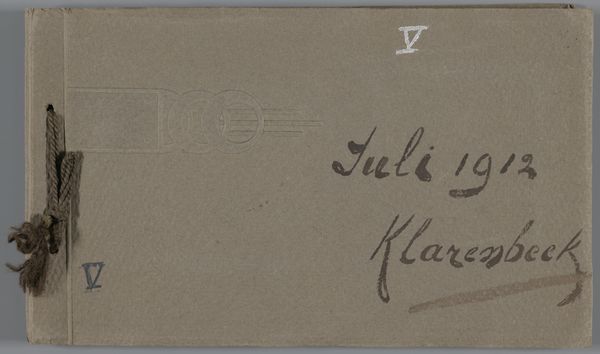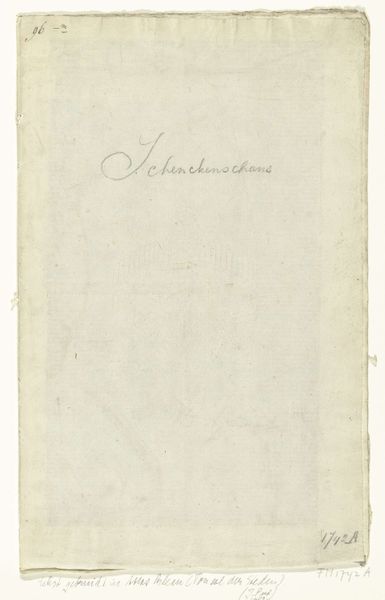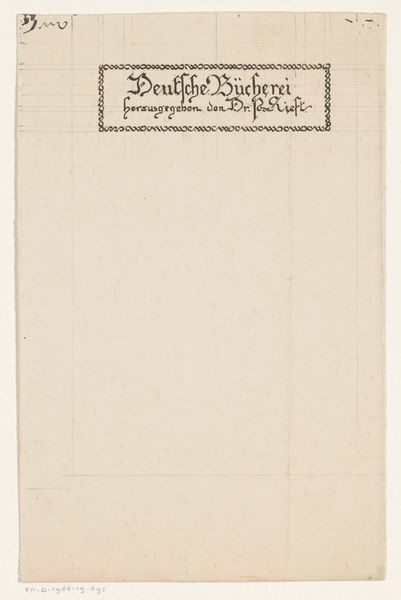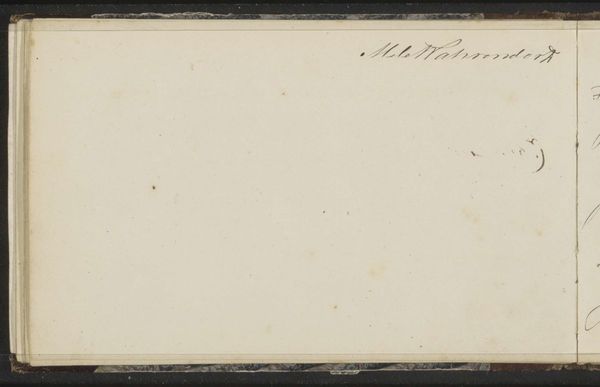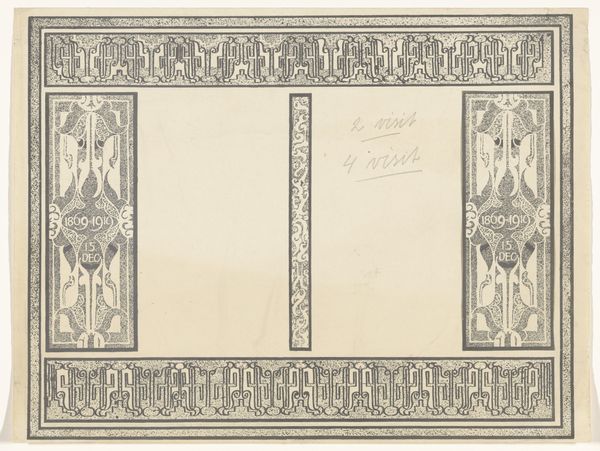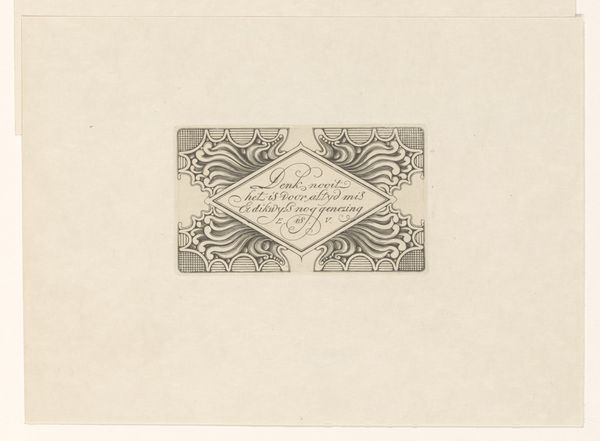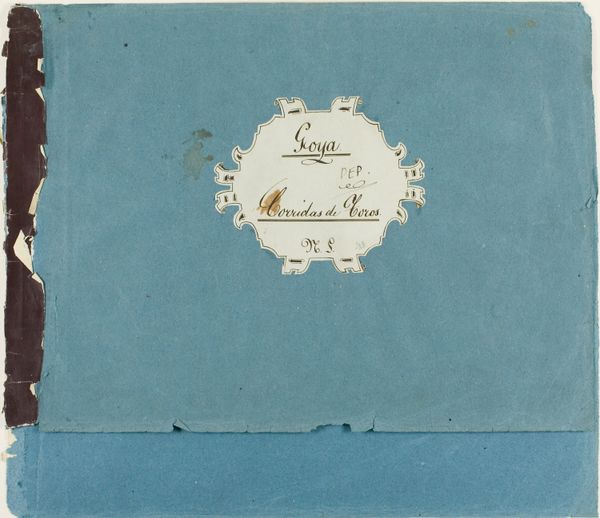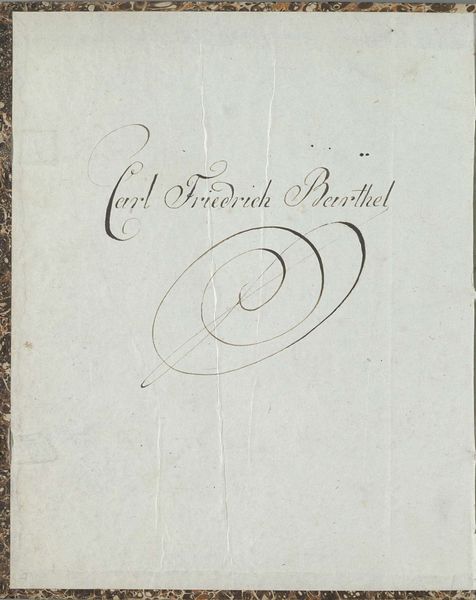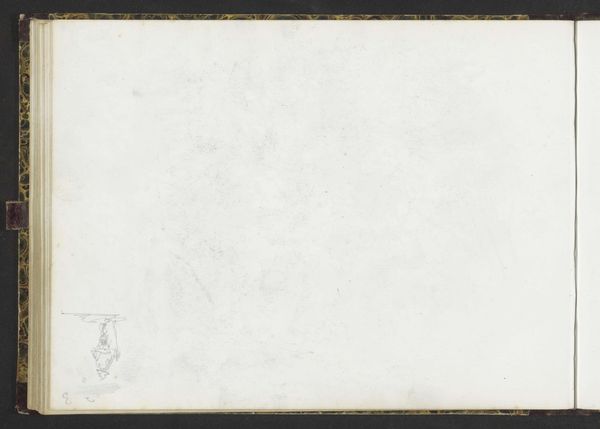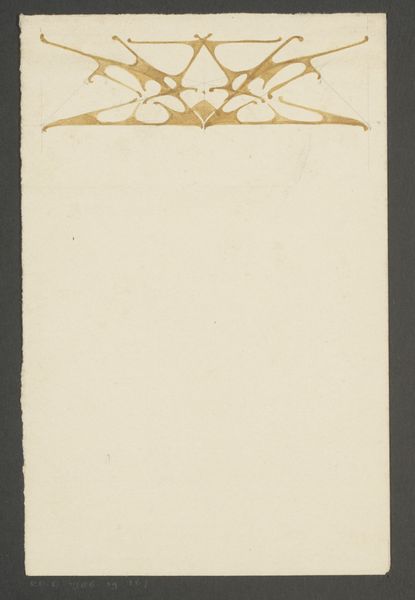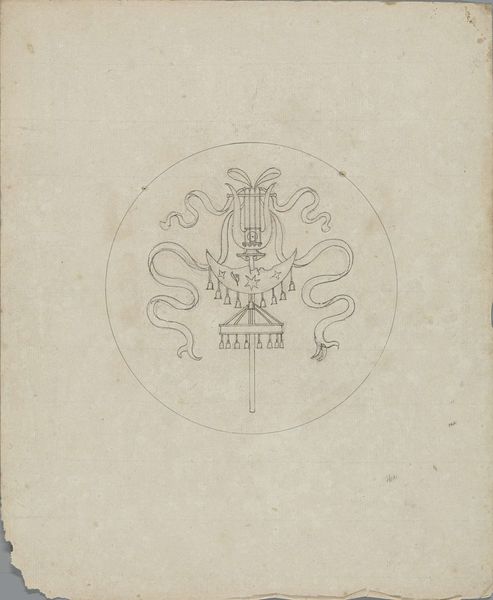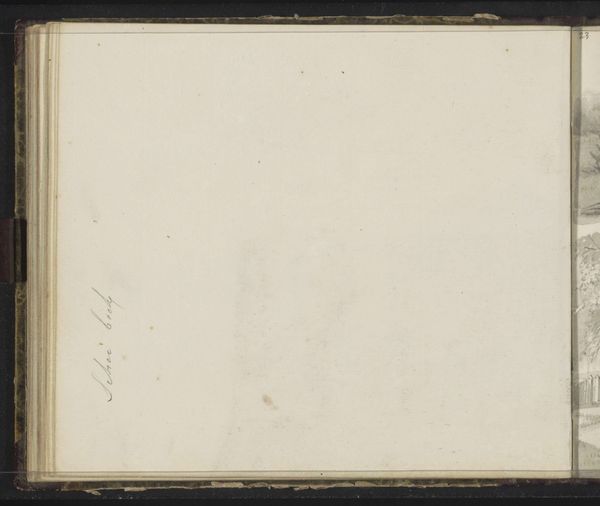
drawing, mixed-media, collage, paper
#
drawing
#
aged paper
#
mixed-media
#
collage
#
script typography
#
hand-lettering
#
hand lettering
#
paper
#
personal sketchbook
#
hand-drawn typeface
#
thick font
#
handwritten font
#
golden font
#
historical font
Dimensions: height 120 mm, width 157 mm, thickness 8 mm, width 318 mm
Copyright: Rijks Museum: Open Domain
Curator: Looking at this “Schetsboek met 33 bladen” or sketchbook with 33 pages, dating roughly between 1884 and 1927 and attributed to Johan Antonie de Jonge, one immediately confronts its modest yet suggestive presence. Editor: It's so unassuming, almost like a forgotten diary. There’s a certain melancholy about it, the off-white of the paper whispers stories of fleeting thoughts and abandoned projects, you know? Curator: Indeed. This object offers insight into the creative process, it represents not only De Jonge's personal explorations but also the very materials and labor involved in art production. Editor: And what about that hand-lettered title, "Schetsboek?" It’s gorgeous! The calligraphy is so deliberate, and there’s that little windmill illustration. It suggests someone taking quiet pride in their craft. It also speaks of history, what kind of paper was being made back then? What was the ink made from? Curator: Precisely, it’s a mixed-media item and raises questions about value—how we classify drawings, collages, and the handwritten word as worthy objects within an artistic or historical narrative. It also begs examination of what constituted ‘art’ versus ‘craft’ during that time. Editor: I like imagining de Jonge carrying this around, maybe tucked in his pocket. Did he feel the same nervous energy about a blank page as I do? Or was he prolific, filling it up with a frenzy of ideas? The materiality feels so intimate. Curator: It humanizes the artist, shifting focus away from grand masterpieces and highlighting the everyday practice, the iterative and sometimes mundane processes that constitute creativity. Consumption and intention here must be questioned, for whom did De Jonge create these? Editor: Maybe just for himself. And now, decades later, we are poring over his private world. The intimacy is palpable, really gets you wondering what's inside! Curator: True, what it meant to him can now be studied, offering broader reflection on creative labor and the democratization of art. The notebook in its entirety acts as the art. Editor: A powerful reminder that every artist, no matter how unknown, contributes to this grand, ongoing conversation we call art history. It feels important somehow.
Comments
No comments
Be the first to comment and join the conversation on the ultimate creative platform.
